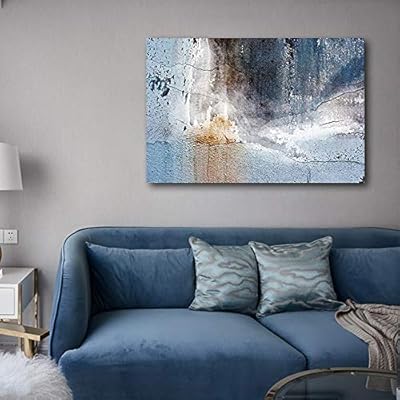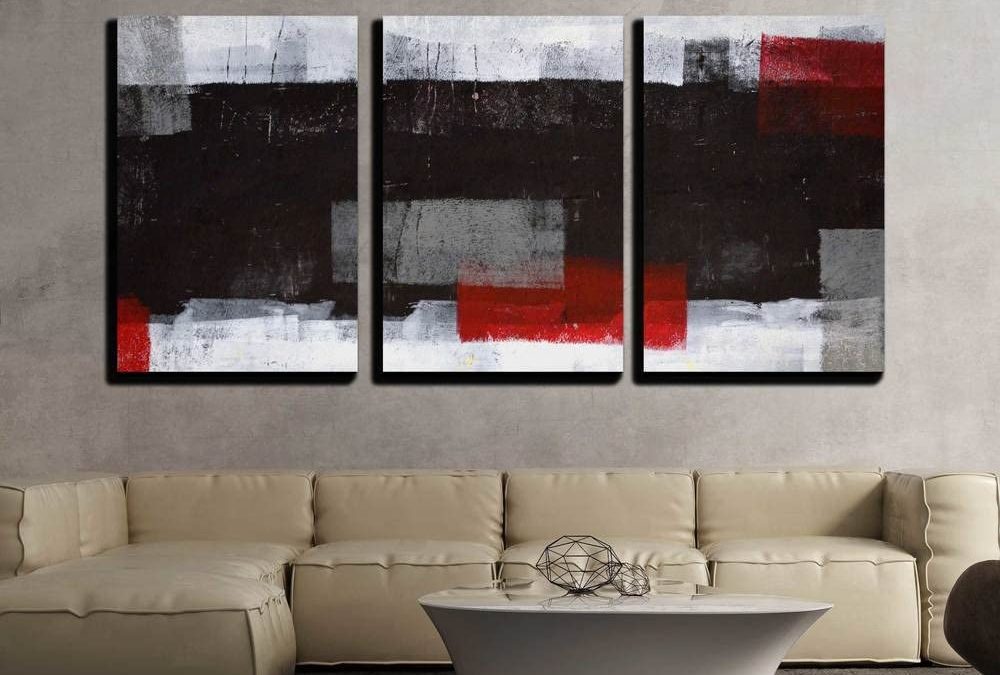There are many types of art. Impressionism. Expressionism. Photorealism. Surrealism. Pop. The list goes on and one. However, there is one specific type of art that can be very controversial; abstract. Abstract art is one of the most difficult types to review and comment on. Why? Well, most forms of art are rather obvious and exacting. In other words, when looking at most art it’s obvious what the art depicts and what the artist might have been trying to say. Abstract art is completely open to interpretation. One person’s understanding of an abstract piece can be entirely different from another person’s. In that way, abstract art can be exciting. This reason is also why many people tend to shy away from looking at it. What do you think? Interested in learning more about abstract art? Read below for abstract art wall art facts.
Origins

It’s difficult to determine when abstract art first emerged. Since the dawn of time, people have been creating art that is more about feelings and themes than imagery. For this reason, it’s even more difficult to point out one specific person who created abstract art or ushered it in as a movement. There is a large debate amongst art historians about when modern abstract art was first born. Many argue that it occurred in the 1910s, with the debut of Wassily Kandinsky and his painting titled “Picture of the Circle” from 1911. Other historians believe the birth of abstract art can be found in the 19th century, through the art of James McNeill Whistler or Claude Monet. For most historians, the actual origin of abstract art will never be settled. Read below for more abstract art wall art facts.
Definition

Abstract is is formless, shapeless, sometimes even idealess! Therefore, there are a number of definitions for abstract art. So, to best define it, it is important to find the commonality between all forms of abstract art. Using the simplest terms, we could say that abstract art uses a visual language of shape, color and form to create a composition that exists separate from normal visual references. Abstract art does not always depict a person, place of thing within the natural world, and when it does, it’s depicted in a way that does not closely resemble something in real life. All abstract are stands by one of many guiding principles; reality is subjective, and it’s up to the viewer of the art to describe it. Read below form more abstract art wall art facts.
Movement

The main facet of abstract art is that it can be described as being part of a non-representational practice. This means that it is a type of art that does not aim to represent reality. This facet is a guiding principle for the abstract art movement. As previously stated, historians are at odds over when and how abstract art first started. That said, they can point to two periods of time that are considered the golden age of abstract art, signifying its importance in modernity. The first period was between 1912 and 1925. The second period was set between 1947 and 1970. Both of these periods share a commonality. The Great Depression of the 20s and the 30s, World War I and World War II all happened during these periods of time. All of these events were tragic and transformative for the world at large. When human suffering is at its greatest, new art forms tend to rise from this feeling of hopelessness. Read below for more abstract wall art facts.
Expressionism

Slowly but surely, abstract art bled into other art forms. Eventually, abstract expressionism was created. Essentially, abstract expressionism is a branch of art that originated in New York during the 1940s and 1950s, and aimed at at creating emotional expression through spontaneity. For example, an abstract expressionist painter is most well known for creating large scale paintings that break away from traditional creative processes. Someone painting in this style might take a canvas off of an easel, place it on the ground and then splatter house paint over it. For the time, ideas like this were revolutionary. So revolutionary, in fact, that echoes of this art form reverberated in many artistic mediums, including drawing and even sculpture. Popular abstract expressionists of the time were Willem de Kooning, Jackson Pollock, Lee Krasner and Mark Rothko. Read below for more abstract art wall art facts.
21st

The 21st century has given birth to several different art movements. Thanks to technological progress, artists can essentially create whatever comes to mind. Just to name a few, digital art, hard-edge painting, appropriation, hyperrealism, and photorealism have all risen to prominence over the past several decades. Have you realized that abstract art is a formative part of each of these art types? Over the years, abstract art has changed and drifted in and out of focus amongst contemporary critics. Although abstract art isn’t being made exactly like Rothko’s was these days, it’s important to realize that it will never disappear. Abstract art simply takes on different forms and shapes in the form of other art movements. Did you enjoy these abstract art wall art facts?
Conclusion
We live in a postmodern world, and that world is heavily defined by the art created during the golden period of abstract painting. Now that you know so much about it, how do you feel? Does abstract painting interest you more? Maybe you don’t feel that engaged looking at it? Well, whatever you feel, we hope you learned something important about art while reading this. We hope you enjoyed these abstract art wall art facts!

